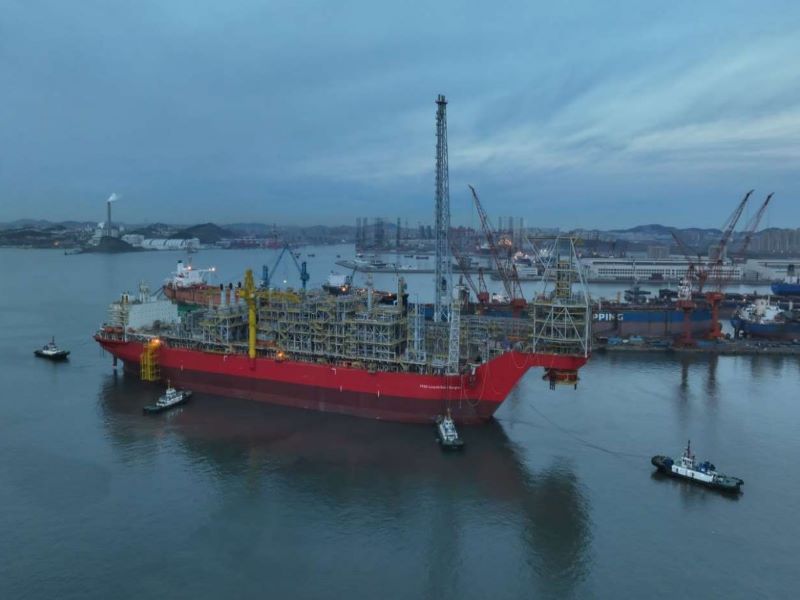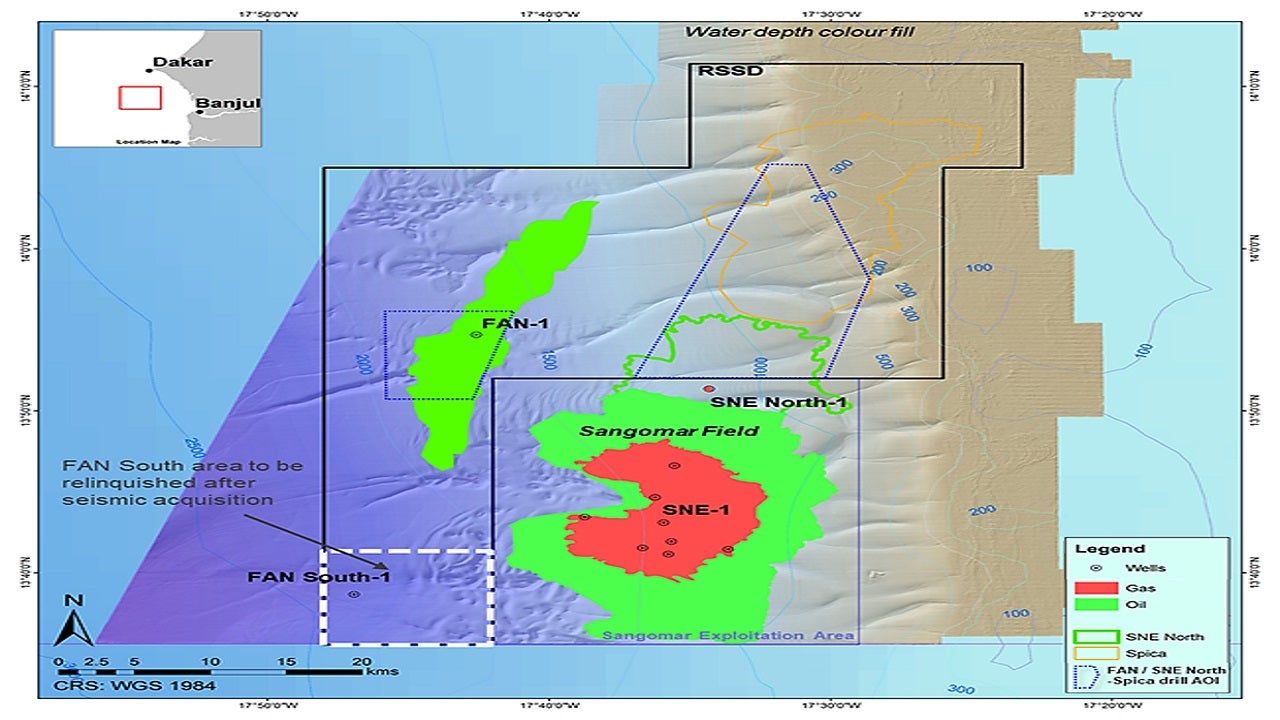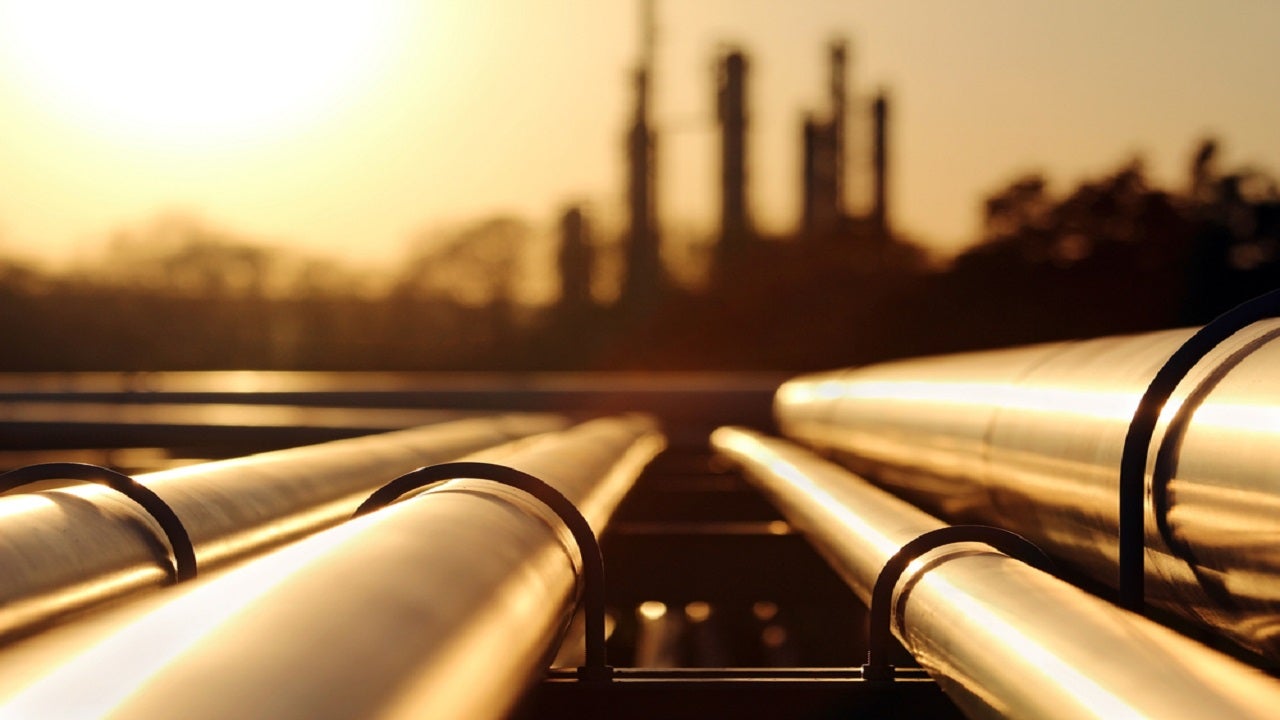The Sangomar (formerly SNE Deepwater) oil field is located in the Rufisque, Sangomar and Sangomar Deep Blocks, which cover a combined area of 7,490km² within the Senegalese portion of the Mauritania-Senegal-Guinea Bissau Basin. The field was one of the world’s largest oilfields in 2014.
The project is being developed by a joint venture of Rufisque Offshore, Sangomar Offshore and Sangomar Deep Offshore, comprising Woodside Energy (82%) and PETROSEN (18%), with Woodside Energy as the project operator.
The environmental and social impact assessment for phase one of the project was completed in November 2018.
The project owners submitted the development and exploitation plan to the Senegalese government in October 2018. Front-end engineering and design activities began in December 2018 following the approval of the Senegalese Minister of Petroleum and Energies. The field was renamed Sangomar in November 2019.
The final investment decision for the project was taken in January 2020. Work on the field development began in early 2020. The first oil from the project is anticipated to flow in mid-2024.
Production from phase one is expected to be approximately 231 million barrels (MMbbl) of oil. The total recoverable oil resources are estimated to be around 500MMbbl over the life of the field. The cost of the project is estimated to range between $4.9bn and $5.2bn.
Sangomar oil field discovery and appraisal
The Sangomar oil field was discovered in November 2014 with the drilling of the SNE-1 exploration well to a water depth of approximately 1,100m and a total depth of 3,000m. The well encountered a 95m gross oil-bearing column within upper Albian sandstones.
The oil field was further evaluated by drilling the SNE-2, SNE-3, SNE-4 and BEL-1 appraisal wells from November 2015 to May 2016.
The drilling and evaluation of the SNE-2 well was completed in January 2016. The well was drilled at a water depth of 1,200m and to a total depth of 2,800m within the Sangomar Block. Oil from the well flowed at 8,000 barrels of oil per day (bopd) from the lower reservoir unit and at 1,000 bopd from the shallower heterolithic reservoir unit during drill-stem testing (DST).
The drilling of the SNE-3 well was completed in March 2016. Oil from the well flowed at a maximum rate of 5,200bopd and had a main flow rate of 4,500bopd over six hours during DST.
Completed in April 2016, the BEL-2 well encountered an oil column of 100m and confirmed the extension of reservoirs in the northern area of the oilfield.
The SNE-4 was drilled at a water depth of 942m and to a total depth of 2,944m within the Sangomar Block in May 2016. It encountered a gross oil column of 100m in the upper reservoir and confirmed the extension of reservoirs in the eastern extent of the oilfield.
Reserves at the West African oil field
The contingent recoverable resources from the field were estimated to be 1C, 2C and 3C of 346 million metric barrels (MMbbl), 563MMbbl, and 998MMbbl respectively.
Sangomar oil field development details
The project will be developed in phases with the first phase focussing on the development of the less complex reservoir areas apart from testing the nearby reservoirs. It will feature a permanently moored floating production storage and offloading (FPSO) facility named Leopold Sedar Senghor, along with 23 oil production wells and associated subsea systems.
The subsea system will comprise wellheads and subsea trees, 9km to 22km in-line tees, up to six manifolds, flowlines and risers ranging from 50km to 150km (connecting to the FPSO), 15km to 50km of flowline end terminals, and 15km to 70km of umbilicals for the monitoring of wells.
Leopold Sedar Senghor FPSO details
The Leopold Sedar Senghor FPSO will be 372m long and 60m wide. It will have a production capacity of 100,000 bopd and 130 million standard cubic feet of gas per day (Mmscf/d). It will have a water injection capacity of 145,000 barrels per day (bpd) and a storage capacity of 1.3 million barrels of crude oil.
A large crude carrier oil tanker is being modified for use as the FPSO. It will be moored at a water depth of 800m via SOFEC’s external Turret mooring system.
The FPSO will allow the integration of subsequent development phases, including gas export to shore and future subsea tie-backs from other reservoirs and fields.
Drilling rigs
The exploration wells were drilled with Transocean’s fifth-generation, dynamically positioned, semi-submersible deepwater drilling rig named Cajun Express.
The appraisal wells were drilled using the seventh-generation dual-activity drillship Ocean Rig Athena.
Financing
Africa Finance Corporation, an infrastructure investor, agreed to collaborate with the government of Senegal to provide $54m (€50m) for the project development in August 2023.
Contractors involved with the project
Wood, an engineering consulting company, was contracted to provide a production management system and virtual metering system for the project in April 2022. The contract follows a flow assurance and engineering assessment of the riser and umbilical system and a subsea flowlines study conducted in 2018.
MODEC International was awarded a contract to supply FPSO for the project in January 2020 followed by an operations and maintenance services contract in December 2020. The contract follows a front-end engineering design (FEED) contract awarded in February 2019.
COSCO Shipping Heavy Industry (Dalian) provided the hull and marine works, external turret and topsides module installation, and conversion services for the FPSO vessel. COSCO fabricated topside modules of the FPSO along with BOMESC Offshore Engineering.
Keppel Offshore & Marine provided integration of topsides and pre-commissioning and commissioning support services for the FPSO.
A joint venture between OneSubsea, Schlumberger and Subsea 7, named the Subsea Integration Alliance, was awarded the FEED contract by Woodside Energy in December 2018 for the subsea infrastructures, comprising subsea umbilicals, risers and flowline systems.
Diamond Offshore, Doris Engineering, Earth Systems, Hamworthy Pumps, Penglai Jutal Offshore Engineering Heavy Industries, Transocean and Xodus Group are some of the other contractors involved in the project.





